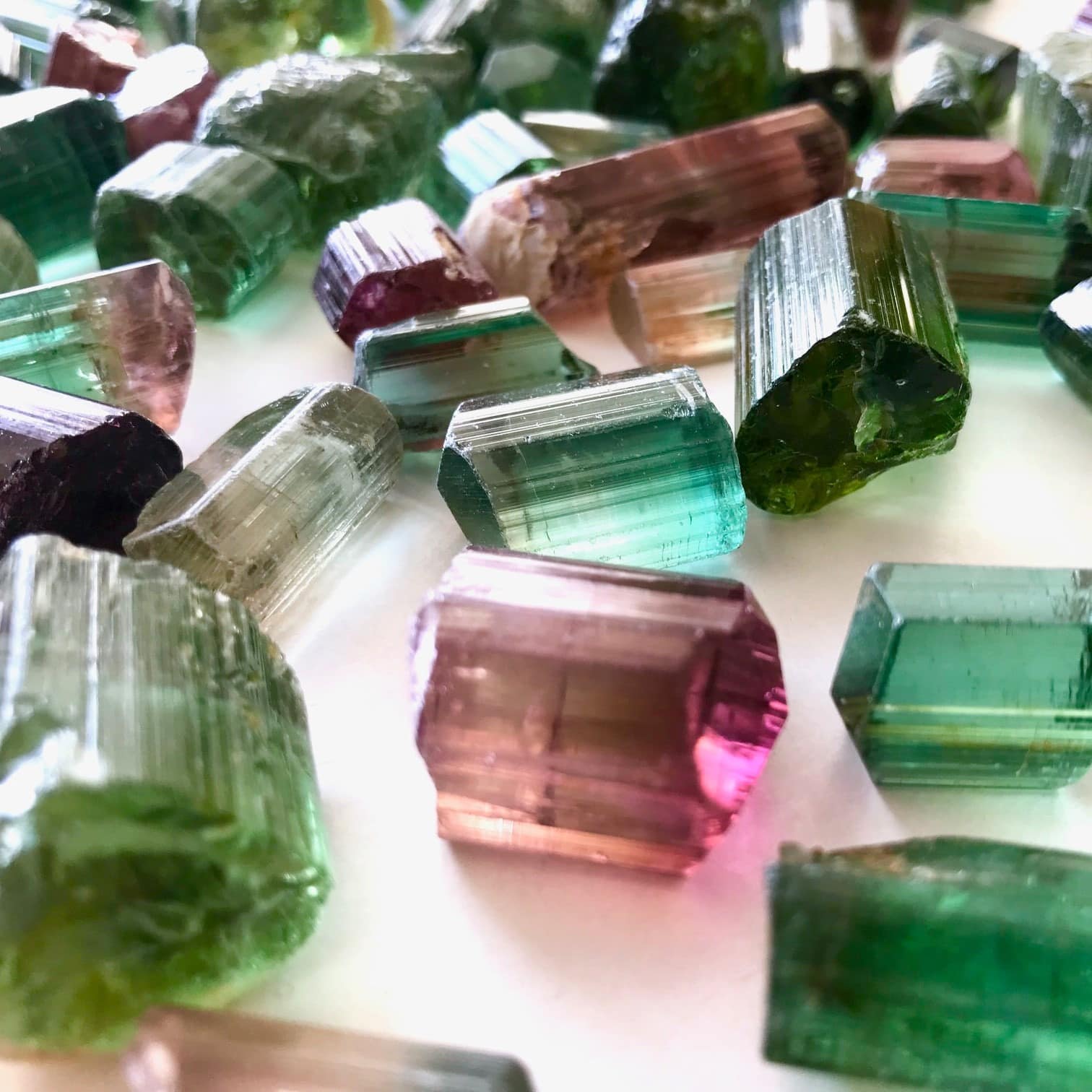In the field of gems, there are not many houses that position themselves at the very top of the range. And those who are able to provide a range of stones from paving stones to exceptional centres, including calibrated stones, special cuts and sculpted or engraved stones are even less so.
In this niche, German companies are clearly at the forefront and we therefore wanted to take an interest and present one of the best known companies in this field: the company Paul Wild based in Kirschweiler, a few kilometres from Idar-Oberstein, the town historically famous for its agate cutting.
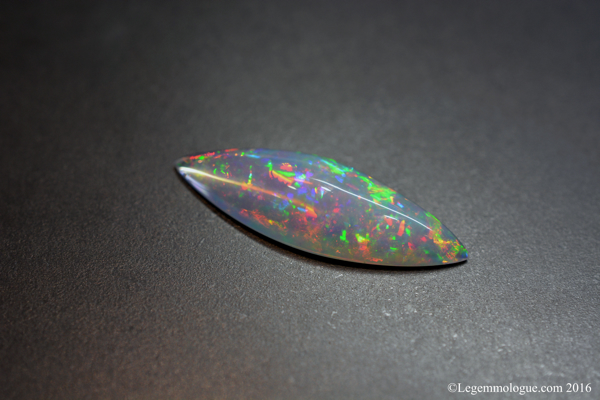
Ethiopian opal of 8,62 cts. Photo: ©The Gemologist
We’ve known about this company for a few years now, but we had the opportunity to talk in more detail with the company’s team in 2015 at BaselWorld. Later, a few hours spent discovering a part of the stock and we didn’t need more to propose you to immerse yourself in more details in its history and to understand its positioning.
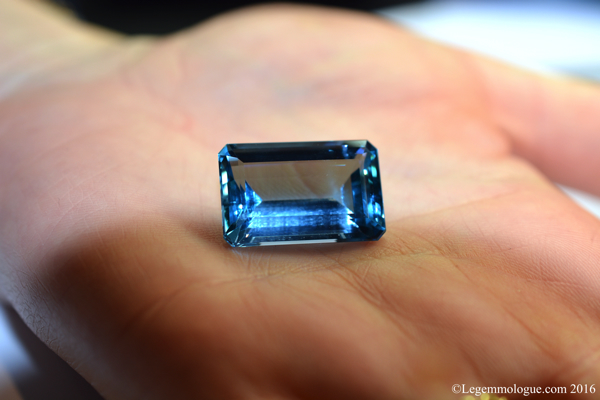
20.49 cts Santa Maria aquamarine. Photo: ©The Gemologist
The Wild family has been historically involved in the trade and cutting of gems since the end of the 15th century, but it was in 1927 that everything changed with Paul Wild, who created the same year the company we know today. Very quickly the company acquired recognition in the cutting of coloured stones.
But it was not until 1977 that the internal strategy changed with the arrival of Hans-Werner Wild. From then on, the company focused on strict control of its raw materials and acquired mines in Africa in the 1970s and in Brazil in the 1980s. By deciding to manage almost the totality of its production line until the marketing, the company Paul Wild will thus acquire a more and more strong presence on the market of the coloured gems.
In 1995, the company struck a blow with tourmalines from the Paraiba mine in Brazil. But there are also other production sites, in Mozambique or Namibia for example, which supply beryls, corundum or demantoids… In addition to this, the company has the title of Sightholder of the TanzaniteOne mine (Tanzania) for the selection and purchase of rough stones, which allows the company to offer these stones to its customers. Today the company employs 300 people worldwide between the offices, the cuttings and the mines.
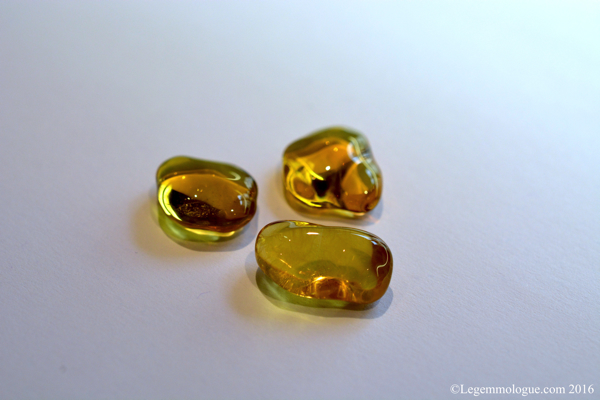
Yellow beryls from Brazil, baroque cut for 33,56 cts. Photo: ©The Gemologist
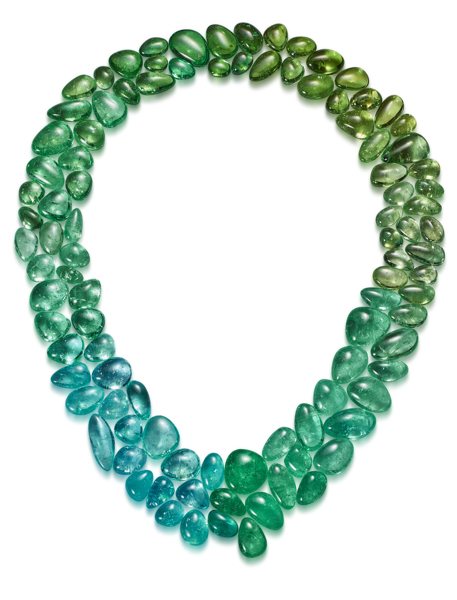
Set of Paraiba tourmalines for 667.31 cts. Photo: Paul Wild
In 1984, the company decided to exhibit its timepieces at what is now known as BaselWorld. The first international trade fair dedicated to jewellery, watches and raw materials, it is an essential showcase for our profession. But Switzerland is not everything. Paul Wild is also present at the major trade fairs dedicated to gems: Hong Kong, Beijing, Shanghai and of course Idar-Oberstein with Intergem. In addition, Paul Wild has distribution partners in most major cities with a well-established jewellery industry, such as Hong Kong, Beijing (the office will open in 2012), Taiwan, Bangkok, New York and Paris..
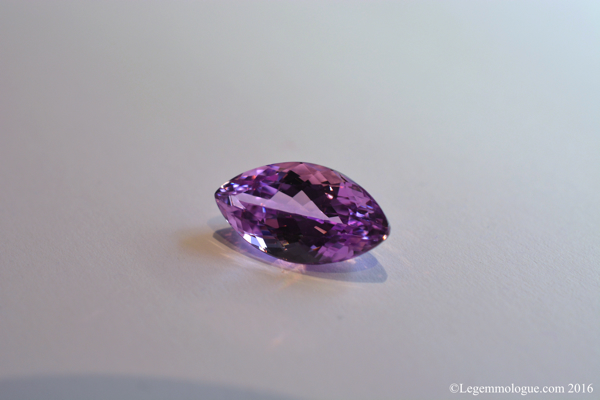
12.86 cts Kunzite shuttle cut. Photo: ©The Gemologist
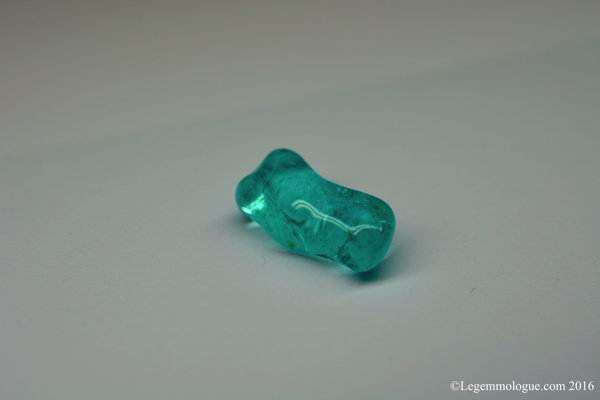
Paraiba tourmaline from Mozambique, baroque cut of 11,32 cts. Photo: ©The Gemmologist
In 2016, and so for more than three generations, the house is still run by the same family. In 1992, Markus Wild – grandson of the founder – joined the company. Today he is the CEO. He was trained by his father, whom he had accompanied to the mines since his childhood. In the continuity of the company’s success, he rightly considers that controlling the production of the raw materials is an obligation in order to provide all the guarantees to the end customer. This point is all the more important today in the climate of over-certification that reigns and which requires traders to be able to provide all the information relating to the gems, from extraction to sale, including the treatments that may be applied to the stones. Indeed, in the field of exceptional gems, it is no longer rare to see stones with two, three or even four certificates..

Tanzanian Spinel of 8,54 cts. Photo: ©The Gemologist
With this status of wholesaler, the company supplies only professionals of our sector: big houses of the Place Vendôme or International, independent jewellers creators but also the small jewellers of district. With a particularly wide choice and stock, Paul Wild can therefore offer stones in all price ranges. Whether it be small gems or unique centre stones, Paul Wild is able to offer calibrated stones or stones made to measure.
Although the company has had a cutting workshop in Bangkok, Thailand, since 1990, it is in Germany that the most important stones are cut, where the company has been able to surround itself with a team of experienced lapidaries for a very long time now. In addition, an internal R&D department develops and proposes new approaches to cutting. A technical collaboration with the Frauhofer Institute led to the creation in 2009 of an automatic cutting machine that allows us to offer highly precise patterns while optimising the original rough. In 2015, we discovered free forms or baroque cuts which allow us to give another dimension to a stone. This is an excellent alternative to cabochon cutting but also a perfect way to optimise a rough and lose less material.
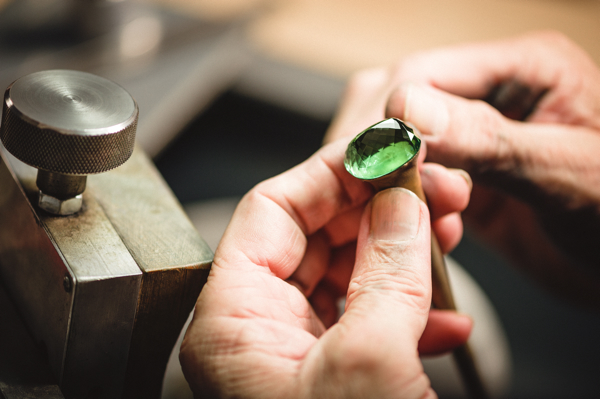
Cutting a tourmaline in the company’s German workshops. Photo: ©Paul Wild
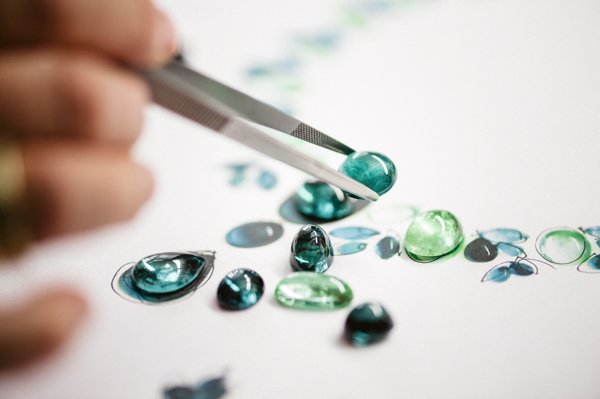
Composition of a set. Photo: ©Paul Wild
A structure of such importance has to be very organised. The orders all come from Germany, where the company’s head office is located. From there, the various subsidiaries coordinate to meet the demands. This is also where all the stock management takes place: from sourcing to sales. Markus Wild is constantly on the move between Brazil, the United States, Africa, Europe and Asia, at mines, trade fairs and in the various offices. He has to maintain regular contact with the various entities in order to be able to adapt to the market as quickly as possible. The market sometimes evolves in an unexpected way, but Paul Wild does not intend to lose its place among the leaders of the sector. It is therefore necessary to analyse trade fairs and sales, to anticipate customer demands and trends and, above all, to be able to constantly offer new products.

Green tourmaline from Namibia for 27,54 cts. Photo: ©The Gemologist
With this in mind, we wanted to ask them about the last Basel show, which closed its doors a few weeks ago, and which reported fewer buyers than in 2015. Also, rubies, emeralds and sapphires remain at the top of the list, but the other gems are not losing out. Nevertheless, it is necessary to be able to offer pieces with high added value to attract customers.
Pink stones such as tourmalines and morganites have been very popular. But blue is not left out with Paraiba or Paraiba-type tourmalines whose prices are not falling. The so-called neon colours are significantly in the market. There are also spinels and garnets. This year, the company offered tsavorite garnets from a new African pocket with a very bright colour, which were a great success.
It is with this in mind that the houses offering the sets have not seen a significant drop in sales. By offering them since the 1980s, Paul Wild was clearly innovative at the time. If today, boxes of this type are common on the sales floor, it is still necessary to be able to offer perfect matches in colour, quality and with recognised certifications. As the company explains, it is at the price of great adaptability and impeccable transparency on the origins or treatments that positive customer feedback is obtained, thus guaranteeing the continuity of the houses

Tourmaline Paraiba from Brazil for 4,29 cts. Photo: ©The Gemologist
See you soon!




